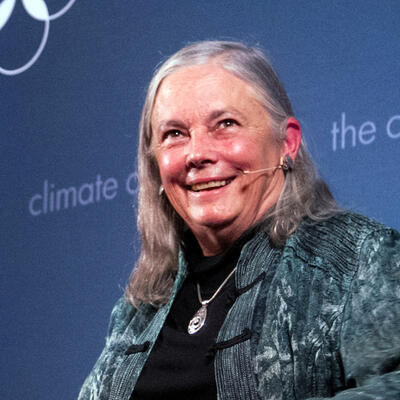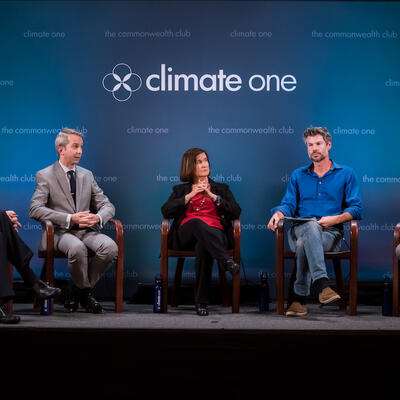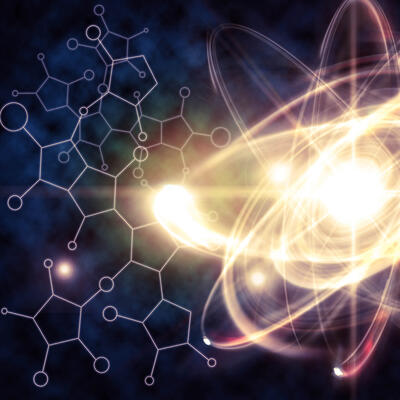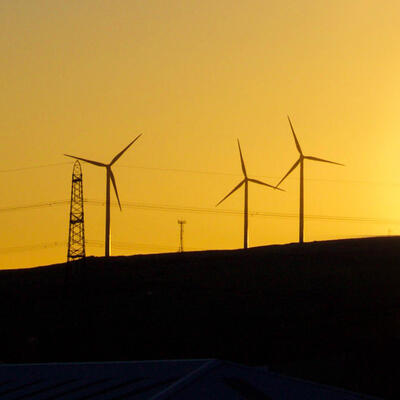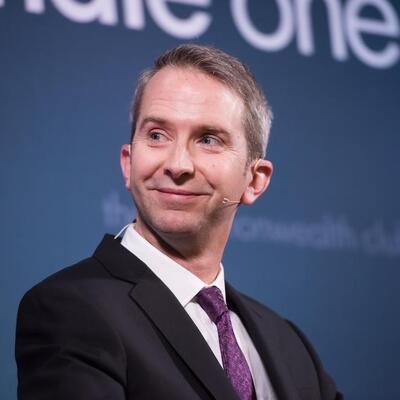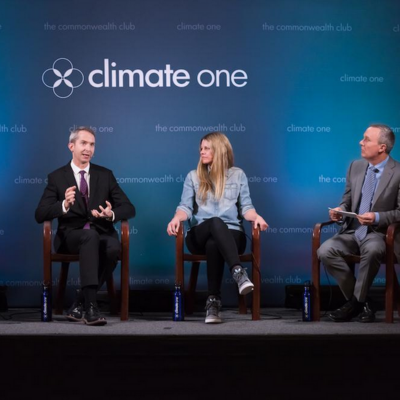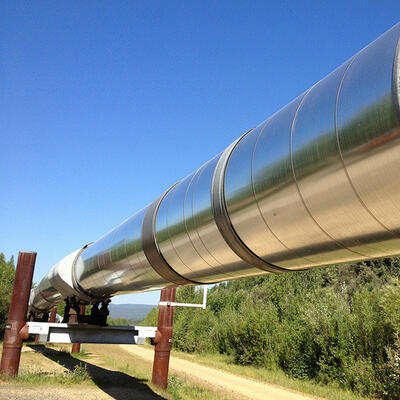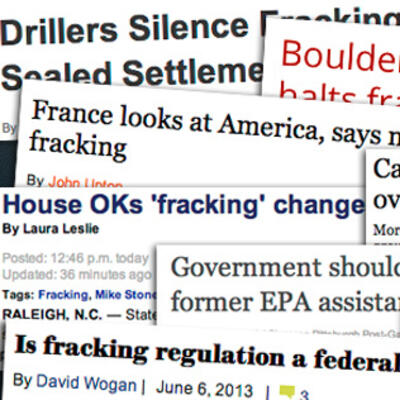
Old Nukes, New Nukes
Guests

David R. Baker

Caroline Cochran
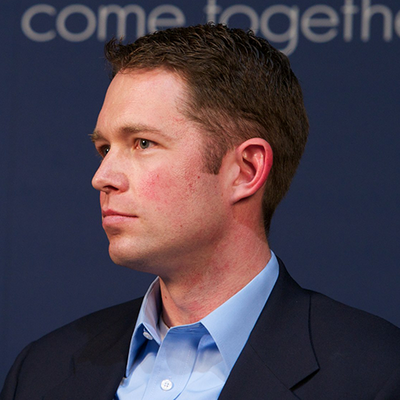
Lucas Davis
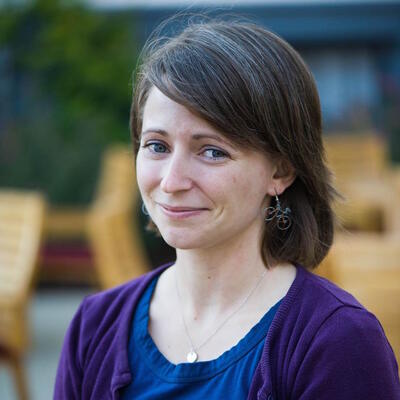
Jessica Lovering
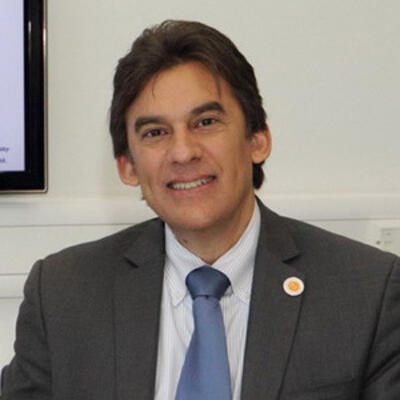
Jose Reyes

Ray Rothrock
Summary
A two-part conversation about the present and future of atomic power in a hot and crowded world.
David R. Baker, Energy Reporter, San Francisco Chronicle
Caroline Cochran, Co-founder and Chief Operating Officer, Oklo
Lucas Davis, Associate Professor, Haas School of Business, UC Berkeley
Jessica Lovering, Director of Energy, The Breakthrough Institute
Jose Reyes, Chief Technology Officer, NuScale Power
Ray Rothrock, Partner Emeritus, Venrock
Full Transcript
Greg Dalton: It's been five years since the nuclear disaster at Fukushima dramatically change the outlook for nuclear power in the United States and around the world. On the show today, we explore which way the winds are blowing for atomic power. Is it an industry in decline, or poised for a leap forward. How does nuclear power fit into the battle against carbon pollution?
I'm Greg Dalton and first we will talk about the hundred nuclear power plants that generate about 20% of electricity around this country. Many of those plants have been given another 20 years or so to operate, while others hope to get a similar new lease on life. What are the cost and safety implications of running those plants longer than planned? Should the Diablo Canyon nuclear power plant remain operating or be shut down? We’ll discuss those questions and more with our audience at the Commonwealth Club in San Francisco.
The second half of the show, we will turn to nuclear startups, two words that don't often appear in the same sentence. We will talk with a venture investor and two entrepreneurs trying to build nuclear energy they say is cheaper and safer than existing plants. First, the nuclear plants running refrigerators and TVs around the country today. David Baker joins us; he’s an Energy Reporter at the San Francisco Chronicle. Lucas Davis is a professor at the Haas School of Business at UC Berkeley and Jessica Lovering is Director of Energy at The Breakthrough Institute, a pro nuclear think tank. Please welcome them to Climate One.
[Applause]
David Baker, let's begin with San Onofre; 1968 that nuclear power plant came on line. It was recently shut down. So tell us the story of San Onofre and why it was shut down.
David Baker: San Onofre went through process of replacing a lot of the key equipment to the plants that could keep it open another couple of decades. And what happened was in January 2012, they had an incident where there was a small release of radioactive steam. And when they burrowed down trying to figure out exactly what had happened they found out that some of this replacement equipment, which was extremely expensive didn't operate the way that was supposed to. There was basically a lot of premature wear on these tubes that are supposed to exchange heat within the reactor and that’s a key part of the plant. And it turned out that in order to keep that plant going, they were going to either have to come up with some kind of really extensive technological fix or maybe even replace the replacements which would be extremely expensive. And the companies that operate it, primarily Southern California Edison, they took a look at the situation and knew that anything that they did was gonna take a while to get federal approval for. And they threw in the towel, they basically said no, this is not gonna be worth it. It's not gonna be effective for the repairs; let’s shut it down.
Greg Dalton: Lucas Davis, what was the carbon impact of that decision to shut down San Onofre?
Lucas Davis: It was enormous Greg. San Onofre represented about 10% of California's electricity generation. So when it shut down it was the equivalent of putting 2 million new cars and trucks on the road. It was valued at about $35 per ton; it was $300 million a year worth of carbon dioxide emissions, a huge increase in carbon dioxide.
Greg Dalton: So not a good deal for the climate. Jessica Lovering, Diablo Canyon is the one remaining nuclear power plant in the state, in California. There is a debate whether that should be shut down or extended. Do you think it should be kept going, why?
Jessica Lovering: I think as Lucas said San Onofre was a huge, you know, 10% of California electricity Diablo Canyon is a similar percentage. I think if California is trying to dramatically reduce carbon emissions which we have a state mandate to do, we can’t do it without Diablo Canyon continuing to operate. It would take a huge amount of renewables to replace it sort of unprecedented, it’s unsure if we can handle that. And in the meantime, if we’re gonna be building a lot of renewables they should be replacing all the natural gas California still about 60%, 70% natural gas. So for trying to reduce carbon emissions let's keep the nuclear power plant operating; make our challenge a little bit easier.
Greg Dalton: David Baker, what’s PG&E gonna do are they, any indication are they gonna keep it open, shut it down, are they gonna do something similar to San Onofre or is Diablo Canyon different than San Onofre?
David Baker: It’s sort of hanging in limbo which I’m quite surprised by. PG&E, if you go back a few years before the Fukushima accident, back to 2009. PG&E announced with great fanfare that they wanted to keep Diablo open another couple of decades and they were gonna start the process of getting a new license extension for it. After Fukushima, that came to a screeching halt, they said okay, we’re gonna stop, we’re gonna pause the relicensing project with the federal government. We’ll do some more seismic tests and then we’ll see.
They’ve done those seismic tests, they’ve finished them off, shift them to the state government for review. And the federal government, the Nuclear Regulatory Commission has said, okay, we’ve waited long enough. We’re gonna go ahead and just start all the administrative work with relicensing anyway. But the company is still officially on the fence. If you talk to them about it, they say well, we’ll kind of keep things going as we need to but we have not made a final decision that we want to go ahead and keep this plant open a couple of decades. And they’ve been in that kind of limbo state for a couple of years now which surprises me.
Greg Dalton: Isn’t it economic to keep that going because it’s already paid for? Are they concerned about these new earthquake risks, these faults that are newly discovered that weren’t quite known when the plant was built?
David Baker: They say they’re not concerned about the earthquake risks. In fact, they like to boast that the plants as it stands right now could survive the strongest quake that’s likely to hit there in 10,000 years. At the same time though, they do have a lot of issues going at the state level that could require them to pump a lot of money into the plant. In particular, there’s a decision that's been pending for a couple years at the State Water Resources Control Board. Where the state government may force the company to put in a new kind of cooling system for the plant and the estimates I've seen of the cost of that are everywhere from $1.4 billion all the way up to $14 billion. And so that's a big question mark.
Greg Dalton: Jessica Lovering, the cost of keeping Diablo Canyon open, could that be prohibitive?
Jessica Lovering: Yeah, they wouldn't spend $14 billion. They would shut down the plant that’s what they required. And they’re trying to find a solution what the State Water Control Board that’s something they can afford and that helps them meet those environmental goals of reducing the water temperature and the water intake so.
Greg Dalton: Jessica Lovering, you went to Fukushima last year. Tell us what you did and what you saw.
Jessica Lovering: So I was there for a conference on new perspectives about nuclear energy as Japan is very concerned in a different way than people think. They are very concerned about where they’re gonna get their energy from and how they’re gonna talk about nuclear and how they’re gonna proceed with public perception on nuclear. But they also know that they need that nuclear for their power grid. So, I did go to the Fukushima Daichi Plant and saw what was around there and it’s a really dramatic sight but I think what really struck me is that even in this like unprecedented worst case scenario, no one died from radiation.
And seeing the area around there with all the damage from the earthquake and more so the damage from the tsunami -- 15,000 people died mostly from the tsunami. I think what struck me was how that catastrophe get so underreported and there’s all this focus on the nuclear accident which is sort of taking the focus off the real tragedy which was they were unprepared for a tsunami even though Japan is very prepared more than any other country for tsunamis.
Greg Dalton: So no one’s died from radiation yet, just been five years. A lot of times radiation takes longer than that. The World Health Organization says there’s a 1% lifetime risk increase of cancers of all types of infant females so there could be some --
Jessica Lovering: Yeah, it’s hard, you know, Japan has one of the highest cancer rates in the world. That’s not a bad thing; it’s because they live so long and they’re very healthy as a population so they don’t get, you know, heart disease, diabetes.
Greg Dalton: They live long enough to get cancer, I guess, okay.
Jessica Lovering: They live long enough to cancer; I know people don’t really think about that. But one in three people gets cancer in Japan normally before -- or, one of three people dies from cancer, so.
Greg Dalton: Lucas Davis, what can we learn from Fukushima, you know, can it happen here?
Lucas Davis: You know, what we keep hearing after every nuclear accident is that this is the past but moving forward this is never gonna happen again. And these were the old technologies and the new technologies are not subject to this. I think nuclear risk is very hard to quantify, it’s imperative we do with the best we can to talk about it. But even ignoring nuclear risks, the economics are so unfavorable for nuclear right now that in a sense it doesn’t even matter how large the accident risks are. What’s happened over the last decade is we’ve discovered an ocean of natural gas under our feet.
And this has made every other form of electricity generation very hard to make an economic argument for.
Greg Dalton: So let’s talk about the cost of nuclear. There’s a couple of new plants under construction in the Southeast part of the United States. Cost overruns, in fact customers are already paying for the plant even though they’re not getting electricity from it. How unusual is that Lucas Davis?
Lucas Davis: So you mentioned these two plants in -- there’s one in Georgia, one in South Carolina. Yes, they’re both way over budget, they’re both expected to cost fifteen plus billion dollars now. And it’s highly unusual as you mentioned, these costs are already getting passed on to Georgia and South Carolina rate payers. So people are already seeing their bills increased even though the plant it’s not gonna be finished, these plants are not gonna be finished until 2019, 2020. Rate payers are already paying for this.
Greg Dalton: David Baker, how unusual is that in energy, and this probably couldn’t happen in California. Some people would say that it happens on the south where regulators are pretty cozy, chummy with the companies.
David Baker: Yeah, in general in the utility industry, it’s generally thought that the southeast is the most favorable environment. I think that’s the term that you hear. But I mean in terms of how common are the cost overruns and all that I mean that’s the issue, one of the biggest issues that’s dogged nuclear power since the 70s, since its heyday. And like the Vogtle plant in Georgia this is an existing power plant they’re adding two reactors to but it's already there and already just adding the reactors to an existing plant is getting somewhere in the ballpark of $14 billion. Diablo, if you -- for all the work that they had do to open that thing and put in earthquake supports and whatnot, if you bring that up to today, if you do an inflation calculator, their cost in today's dollars were about $12.5 billion to open that plant. So it hasn't actually gotten cheaper over time. If anything, it's gotten a little more expensive, which is kind of scary for any technology.
Greg Dalton: Jessica Lovering, there’s a cost escalation here; cost of renewables, other forms of energy is going down, nuclear is going up. Can they compete on price in the marketplace?
Jessica Lovering: Yeah. I think, so there’s one I think there’s a misconception when you say the cost hasn’t, it’s gone up a little bit. But I don’t know why we would expect it to go down when we haven't built plants in 30 years. S there's no, you know, the industry had to restart essentially and nuclear is not like a car or a solar panel that you turn off an assembly line. It's a major infrastructure project. So if you look at other projects like bridges, like the Bay Bridge which was also very over budget, very delayed. We’re not expecting the next bridge we build to be cheaper. And so there's questions about how you handle these big projects, but there's a lot of lessons that we've learned about how we can build nuclear cheaper, how other countries do it, particularly France and South Korea. They’ve actually had cost declines over time, even though they’re building these really large, complex projects.
Greg Dalton: And how much of that, Lucas Davis, how much of that has been state government involvement or state subsidy to get those prices down. There’s a question of whether nuclear to subsidize in the United States through the Price-Anderson Act other ways. Lucas?
Lucas Davis: Yeah, so go back to 2004 with me. Marvin Fertel is a lobbyist for the nuclear industry. He walked into Congress and testified in front of Congress that we've figured out how to build new cheaper nuclear power plants, that these next nuclear power plants are to cost about $1000 per kilowatt. This was testified in front of Congress. On the basis of this, that we launch the federal loan guarantees that the Vogtle and some of the plants are enjoying. Those costs are now on the order of five times as high as was what Marvin Fertel testified in 2004.
Greg Dalton: So what’s the prospect Jessica Lovering? Other countries have done it cheaper. And as always there's been this long promise, oh next time will be cheaper but that next time never seems to come.
Jessica Lovering: Yeah, I think I mean one big issue is we don’t because this was so big we don’t build enough of them to see those cost declines. So the big lesson learned that is could be shared to standardized reactor design. So building the same reactor over again, building multiple ones at each site. And also going a little smaller since utilities most utilities in the U.S. don’t want to build four, five one gigawatt reactors which are huge. But maybe if the reactors are more like 500 megawatts or even smaller, 50 megawatts you could build enough of them to sort of get those assembly line learning and efficiencies. And I think one thing is the price of a wind turbine or solar panel has come down a lot in cost because they come off an assembly line but the installed cost is a very different trend. And we saw, you know, several years ago the price of a wind turbine went up for several years. And when China stopped sort of saturating the market with solar panels we saw costs sort of level out for solar. So I think there's not as many inherent trends as we think a lot of it is based on market demand and how we’re doing these projects. So I think there's a lot that’s still uncertain.
Greg Dalton: David Baker.
David Baker: There's one thing with that though, that’s important to keep in mind if you’re talking about the companies themselves, the utility companies. There's a lot of pressure to, you know, when you're adding a project have something that you can actually know how long it's gonna take you to get it built and really have a good handle on the cost before you start. And yeah, if you're a utility it makes a lot more sense to add a couple of natural gas plants because you can do that in less than 10 years. Whereas with the nuclear plant you're looking at a very long window for getting a site permit, getting federal permit and all that. Even before you get to whether or not you can bring it in on cost.
Jessica Lovering: Yeah, and that’s another reason for this big boom in natural gas consumption. It's not just that the price the fuel is so cheap, but these plants, these combined cycle gas turbines, the actual power plant is so cheap, it’s modular and mass-produced. And the capital cost on those is sometimes less than a thousand dollars per kilowatt which is --
Greg Dalton: We’re talking about nuclear power at Climate One with David Baker from the San Francisco Chronicle. Jessica Lovering from The Breakthrough Institute and Lucas Davis from the UC Berkeley School of Business. I'm Greg Dalton.
We’re gonna go to our lightning round and ask a brief questions, yes or no questions of each of our speakers starting with David Baker. PG&E will elect to shut down the Diablo Canyon nuclear power plant yes or no, prediction?
David Baker: Prediction, oh. I think they might shut it down. I think there’s a real chance, yeah.
Greg Dalton: Lucas Davis, the US nuclear industry is in deep decline.
Lucas Davis: Yes.
Greg Dalton: Jessica Lovering, the nuclear power industry has a poor record of controlling costs, true or false?
Jessica Lovering: True.
Greg Dalton: Jessica Lovering, research suggests that men are more likely to take risks than women.
Jessica Lovering: This research is true.
Greg Dalton: That's why people trust women more than men on issues such as nuclear energy.
Jessica Lovering: True.
Greg Dalton: David Baker. Some liberals oppose nuclear power blindly and ideologically unencumbered by facts.
David Baker: I can't agree to the last clause, but I do think there's a lot of truth to the first.
Greg Dalton: Ideological opposition on the left. Lucas Davis, that's similar to conservatives who deny climate science blindly and ideologically.
Lucas Davis: True.
Greg Dalton: Jessica Lovering, The Breakthrough Institute is ideologically in favor of nuclear power and tailors its research and reports to support that predetermined conclusion.
Jessica Lovering: False.
Greg Dalton: Lucas Davis, small modular reactors are like hydrogen. They are the fuel of the future and they always will be.
Lucas Davis: False.
Greg Dalton: Jessica Lovering, California imports coal energy that is laundered in Nevada.
Jessica Lovering: True.
[Laughs]
Greg Dalton: David Baker, the TV show The Simpsons depicts an incompetent safety inspector at a nuclear power plant, Homer Simpson and a plant owner, Mr. Burns. How much does that reflect the reality inside the nuclear industry, none, a little or a lot?
David Baker: I am happy to say I've never met Homer Simpson on any visit that I've made to Diablo Canyon.
Greg Dalton: That ends our lightning round. How do you think they did, I think they did pretty well.
Let’s go on to extending the licenses. David Baker most of the plants around the country have been extended is that a good thing, you know, continue to run these plants they’re already paid for, they’re already operating is that a good way if you're concerned about carbon to continue to get carbon free electricity?
David Baker: You’re asking personal opinion?
Greg Dalton: Sure.
David Baker: Yeah. I mean if they can demonstrate that they've got a good safety record. And if they can demonstrate that they've got all the equipment in the proper shape that they need to keep going another couple decades, yeah.
Greg Dalton: Lucas Davis, extending the existing plants that are already working. Some have been shut down some environmentalists and others want to shut down some of them particularly near New York City, should they be continued?
Lucas Davis: Extending them is absolutely a good idea. I draw very strong distinction between new nuclear power plants which are proving to be too expensive and existing plants which are far from Homer Simpson. The people who operate these plants are amazing. They've learned to produce so much electricity with this existing capital stock, let’s use it. We’re talking about enormous amounts of carbon dioxide abatement.
Greg Dalton: Let’s talk about waste, the big problem with nuclear. Lucas Davis when waste is included in the cost of nuclear power. How’s that change because nuclear power is often said to be, you know, cheap once it's up and running and sometimes that the waste cost is not included in that.
Lucas Davis: The waste is small relative to production cost.
Greg Dalton: Jessica Lovering, what’s the future solution to waste in the United States? The first the most recent attempt was trying to shove it into Nevada which is already kind of glowing a little bit like they won't notice or put it there. So what's the next solution to waste in this country?
Jessica Lovering: Well I don’t think there’s a solution; I think there’s many solutions. And I think we’re gonna pick one and go with it. But there’s reactors that can burn the waste as fuel. There’s a lot of different types of reprocessing, recycling. And I’m excited about all the options that we have for waste because it’s really, I like to think of it as a resource, not as a, you know, piece of trash that we need to bury.
Greg Dalton: And so that’s a consent based process where states and counties will actually say, “Hey, send it to us we want it.” Is that happening and --
Jessica Lovering: That’s the direction that they’re going in is starting to restart the process for, maybe not a single or a single permanent repository. Maybe many regional repositories that would be consent based; communities would compete, put in bids to host them because they want to have a high-tech facility in their community that they trust and that has lots of jobs. And it would be more, it would be more beneficial to the community if there was also R&D going on there and they were developing new reprocessing technologies or building new reactors rather than just a waste dump. But I think there’s still a lot of communities in the U.S. that would like to host such a facility.
Greg Dalton: The idea is though that they would volunteer. It wouldn't be imposed upon them by the federal government which was a big problem in Nevada. Let's look outside the United States, Lucas Davis is nuclear happening? It took a dive after Fukushima, you know, China is doing a lot of nuclear. What's the prospect outside the United States?
Lucas Davis: I think if you step back, you see that the nuclear power industry is in deep decline. The peak was really in the 1970s, early 1980s. In late 1970s, there were 300 plants under construction worldwide. Today there's less than 70, most in China. China has something like 25 plants under construction reactors under construction. I'm thrilled that there's a few plants being built. I think that the carbon challenge is so enormous we need to be trying everything. I'm kind of glad that it’s not going into my rates. But just to be fair, this is a small level of growth in nuclear power compared to the enormous increases in energy demand that are occurring all over the world. This is an industry that nuclear is gonna continue to be a smaller and smaller fraction of our generation portfolio.
Greg Dalton: So as the new power that’s being added, nuclear's market share David Baker is shrinking, is that right?
David Baker: Yeah. And I think it probably unless there's massive intervention of the government scale due to climate change, I think it’s gonna continue to shrink. I mean even in China, China is an excellent example, they’re trying to build this but they’re also building a lot of renewable facilities as well. And they’re now doing sort of a 180 on coal. Within the last five years or so they just decided no we can’t keep doing that. But rather than going whole hog on nuclear power, now they're just doing it as part of a balanced portfolio. And I think that's what you’re gonna see going forward in the countries that are more receptive to it. Other countries aren’t gonna touch it at all.
Greg Dalton: Let’s talk about the rates, David Baker in California, we’re gonna go to our audience questions. The rates have recently some people say that renewables have made electricity more expensive in California. That's a bad thing, is that true?
David Baker: Yes, it's true. We have had an increase in our rates due to increasing the amount of renewable power that we’ve got on the grid. And that is gonna keep going for a few years. It's when you talk to PG&E about they’ll never give you an exact number but they say that most years it’s somewhere in the ballpark of 1, 2 and at the absolute most 3% increase in electricity rates that you’re paying. And that depends just on how many of these new facilities are coming on line in that given year.
But at this point, the prices that they’re getting bid now for new projects, new renewable projects that haven't been built those prices have really tanked to the point where for new solar projects they’re actually coming in around how at the same price that Diablo Canyon can generate power for. So they’re already cost competitive they’re gonna become more so over time. And so yeah we have seen an increase in our utility bills because of renewable power. But there is a possibility in the future that will start to reverse itself.
Greg Dalton: Jessica Lovering, if renewables continue to get cheaper how will that affect nuclear?
Jessica Lovering: I think it won’t very much because they provide very different kinds of energy or very different kinds of electricity. We still need base load, we’re still gonna need base load for many decades. So I think your choices are limited; in that sense it’s gonna be nuclear. And if you want to keep it low carbon it can also be hydro but I don’t think they’re gonna compete too much. They can work well together. And hopefully that’s how it’ll go forward.
Greg Dalton: Base load being power that's always there; wind and solar fluctuate with that the wind and the sun. Let’s go to our audience questions. Welcome to Climate One.
Male Participant: My name is Bob Gould, I work with Physicians for Social Responsibility. I’m also a pathologist and I just wanted to comment on what I think is a very low ball estimate of health impacts from Fukushima that Ms. Lovering put out. Just claiming that no one died from Fukushima sort of end of story. We already know from the Fukushima childhood screening project that about 160 thyroid cancers have been diagnosed. And understanding that part of that might be screening effect, those that have been picked up have been shown to be very aggressive with local metastases and lymph node involvement as well.
So I just think that one has to be honest about what the likely health impacts would be and not downplay them.
Jessica Lovering: Okay.
Greg Dalton: Jessica Lovering.
Jessica Lovering: I’ll be honest. I think it’s very difficult with the thyroid cancer because it is a lot of it is a screening issue. So the more you look for it, the more you find. Good studies compare similar regions, similar child groups, people that were affected by Fukushima, people on the other side of the country. They’ve actually found still very similar rates of actual thyroid cancer. In fact one study found lower rates of actual thyroid cancer in people around Fukushima and I think that’s just statistical noise but we’re not seeing an actual effect there yet. And with the surrounding radiation, I mean right now Fukushima has less background radiation than parts of Denver.
So, and with regards to the ocean, you know, I think we want to limit the amount of radiation going into the ocean but there’s still a lot of background radiation in the ocean. There’s still a lot of material unfortunately from atmospheric weapons testing. So it’s sort of, it’s a big ocean, you know, we don’t, I don’t wanna be flipping about dumping radioactive material in the ocean but it’s a very, very small amount. And Japan has a really good program for screening every single bag of rice that comes out of the Fukushima prefecture and I wouldn't be worried. I went to Fukushima, ate the food and I think we have that problem under control. It's very easy to detect radiation.
So I am not concerned. I think there could've been a big public health effect, but we’re very good at detecting and now we’re very good at screening. So I think it's under control.
Greg Dalton: We have to wrap up this segment here. Our thanks to Jessica Lovering from The Breakthrough Institute. Lucas Davis from the Haas School of Business at UC Berkeley and David Baker from the San Francisco Chronicle. Thank them for joining us this segment. Thank you.
[Applause]
[CLIMATE ONE MINUTE]
Announcer: And now, here’s a climate one minute.
As our guests point out, the costs of building a nuclear power plant, or of getting existing ones up and running, can soar into the billions. So who’s to blame for the sticker shock? The industry likes to point the finger at government and its pricey safety regulations. But Dave Lochbaum of the Union of Concerned Scientists says nuclear power companies may just have their own bad management to blame.
Dave Lochbaum: The studies we've done have shown that typically, it's not a matter of regulations driving the cost up so much as the companies have mismanaged their activities and run afoul with the regulations. Those drive costs up far more than the few regulations that don't have a safety nexus. Time and time again it's been mismanagement that causes nuclear power plants to be shut down for extended periods. We've had 50 reactor shutdowns of over a year since the Three Mile Island accident. We estimate the cost of each of those to be nearly $2 billion for electricity that was not generated. So, it's mismanagement more than an overzealous regulator that's crippling the industry.
Announcer: Dave Lochbaum, director of the nuclear safety project for the Union of Concerned Scientists, speaking at climate one in 2014. Now, back to the second half of our program with Greg Dalton at the Commonwealth Club.
[END CLIMATE ONE MINUTE]
Greg Dalton: For decades, the nuclear industry's been promising to cut the price tag for building atomic power plants, but costs have soared. Meanwhile, solar, wind, and now even fossil fuels are cheaper than just a few years ago. We turn now to young companies betting they can deliver on the elusive promise of safer and cheaper nuclear energy. Caroline Cochran, COO of Oklo, a nuclear startup based in Silicon Valley. Ray Rothrock is a Partner Emeritus at Venrock, a venture capital firm that has invested in nuclear energy and José Reyes is Chief Technology Officer of NuScale Power, a young company based in Portland, Oregon that is backed by the US Department of Energy. Please welcome them to Climate One.
[Applause]
So Caroline Cochran let's begin with you. You were an MIT graduate student and got into nuclear energy. So tell us how you got into this business.
Caroline Cochran: Yeah, so I was a nuclear engineering undergrad. I did mechanical engineering and also economics because I just love them both so I did them both. But I look at mechanical engineering grad school and realize it's not that exciting and I met some people who are involved in nuclear and I really had no background at all in it, and learned that it can really affect large-scale issues that our world faces whether it’s medical imaging, power, nonproliferation and things like that. So that's the reason why I decided to go into nuclear engineering grad school.
Greg Dalton: And then how did you get together to form Oklo and tell us what it does and how it’s gonna be different. It’s gonna consume waste of other plants, it’s not gonna be, it’s a different type of technology, different kind of waste.
Caroline Cochran: Yeah. So the first thing that people have to understand about the design we've done is that it's very, very small. So it's 2 megawatts electric. The idea is to replace diesel generators. So instead of burning lots and lots of diesel and the cost of transporting that diesel sometimes would be burn 10 gallons of diesel for every gallon you actually end up producing electricity from, that’s kind of the market that needs this kind of power. They, you know, if you’ve seen like ice road truckers or things like that, these people are living in remote areas where power we take it for granted but it's a necessity sometimes to live. So that's the concept behind it. It’s a container size it’s not portable, so it's 35 tons and there’s no such backpack reactor. So that’s kind of the concept behind what we’re doing at Oklo.
Greg Dalton: And Jose Reyes, you’re doing something also is a smaller scale. I don't know, I host an energy radio program I don’t know what a megawatt is; I can’t get my head around that. So give us a sense of the scale and size and how yours is different than what's being done people think of nuclear power plants.
Jose Reyes: Right. Probably the biggest difference is it’s a paradigm shift in how you build nuclear power plants. So what we’ve done as we've got to a very small reactor it’s 50 megawatts. So 50 megawatts electric would power about -- well about 50,000 homes. It’s a good size of energy. That would be one module. It’s building a factory that's a reactor vessel as well as the containment containments about 15 feet in diameter about 70 feet long. So it's a good size but it’s not very large compared to existing reactors. Each of those modules up to 12 can be put in one reactor building. Essentially, you have a reactor that sits in this a stainless steel thermos bottle underground underwater. And that’s the basic concept.
So what we found was that that this approach really reduces the cost associated with nuclear. Because what you're doing is in a factory under very controlled condition you're building the reactor, fabricating, and on-site you're doing all your civil construction. So our build is a three-year build. So significantly reduces the length of time required to build the plant, which reduces the amount of money that you borrow to build the plant. So there's a lot of economic forces involved in reducing cost. And simplicity is also a very large factor in it.
Greg Dalton: And is this something you're doing at a laboratory now, are you actually delivering power today with nuclear? Are these real costs or prospective theoretical cost?
Jose Reyes: Yeah, so basically -- our lead investor is Fluor and so we’ve done very -- big construction company. So they’ve done a lot of work on getting our cost estimates for us. About 90% of the cost estimates are actually based on bids we’ve received from contractors in the U.S. Because we've got the small forgings we can get all of our forgings in the U.S. Because you can go to more than one place to get those forgings you drop the price down for the cost. So it's based on well-established bonds up data. The deployment period I think is really key in moving that forward.
We are now in the design certification stage so in terms of where we are. We’re completing all of our testing this year. So we’ve completed about $40 million worth of testing large-scale facilities in Italy, France and Germany where they have specialized test facilities as well as in the U.S. where we've got a one third scale version of the plant that we've built. It's electrically heated but it models all the behaviors of the new scale module.
Greg Dalton: Ray Rothrock, you did study nuclear engineering undergraduate some years ago. And how is the sort of nuclear establishment poised to deal with the kind of new startup companies that we have here today? Is there a welcoming environment to do a nuclear company that tries to do something new in the nuclear energy industry in the United States?
Ray Rothrock: Well, I think welcoming is a relative term. It is quite interesting that we’re in this new phase of nuclear. You were talking on the previous panel about these very large expensive plants, and they are. There’s only about 40 utilities in the nation that can afford a $10 billion project of any kind, nuclear or whatever. But what’s happening in the last handful of years, this started about five years ago, was there’s a whole lot of new nuclear startups. And they've picked up on ideas that the United States actually tested in the 50s and the 60s in Idaho at the national range there. And some of these ideas are really quite clever. They were shelved when Admiral Rickover picked pressurized water as a core propulsion unit for ships and then the utility industry adapted which is what I studied.
But now 30 years later this stuff is pretty interesting. Because it burns fuel, it doesn't require pressure building like a third of the cost of a big power plant. And that they could be very small. And so this notion you don't need electricity in big chunks you can do it in small chunks. So these innovators, in one of the conferences that I attended in the White House a few years ago, they asked a question, “Well Ray, how many of these projects are there out there?” We went out and counted. There are 44 fission research projects privately financed going on the United States. I was stunned by that number. The White House was stunned by the numbers. Secretary Moniz was stunned by that number. These are the Oklos and the NuScales and all these people that are out there doing this. So why? It’s because of climate change; it’s because of high cost of electricity and all the other stuff. You have to have an industry here in the United States to develop this technology, to export it around the world to electrify the world because we cannot burn fossil fuel anymore, fact.
Greg Dalton: Why it has been so hard for the industry to contain cost and get cost down? Why have costs in the United States soared so much?
Ray Rothrock: Every time something happened we would have to retrofit the existing fleet. And if you build a big complex machine you gotta go in and just like you’re talking about San Onofre earlier, it’s very expensive to go do that and maybe it should have been done like that in the first place, but it is what it is and so a lot of this retrofit is going on. Also, these are very large facilities. I mean again a gigawatt plant whether it cost $2 billion or $10 million that's a lot of dollars. So making them small was never part of the equation. People did not, they thought that scale economies would be what it's all about. But it turns out if you eliminate the pressurized water and you eliminate some of the elements of the source term you could make them small and compact and that means cheaper. And that's what's happening.
Greg Dalton: Jose Reyes, can Fukushima happen here?
Jose Reyes: You know, Fukushima was an event that really was driven by an earthquake and tsunami.
And so we think about maybe coastal regions where you can have tsunamis, but today nuclear power plants have learned quite a bit. And so the NRC implemented certain tasks and actions after Fukushima to assure that that couldn't happen here. Now, all nuclear power plants today are actively powered in terms of their safety. Meaning they need electricity to provide safety over a long period.
Greg Dalton: Power goes out, big trouble.
Jose Reyes: That’s right. So you have backup diesels and that’s why you have redundant systems. When we look at the passive safety systems that like a new skill design, what you'll see is that we’ve come up with an approach when we can eliminate the need for AC power or DC power. We eliminate need for additional water or operator action to put the plant the reactor in a safe configuration. That's why these passive safety systems are so intriguing right now. And you’ll see more and more designs coming forward with this concept of passive safety.
Greg Dalton: Caroline Cochran, Fukushima plant had something General Electric designed, the Mark I design; there are similar plants near Philadelphia and Boston where you used to live. Are you concerned that Fukushima could happen here or has the US government done everything that should be done to make sure that those same reactor types don't -- aren’t a problem here on those coastal cities?
Caroline Cochran: It’s a big concern for the public. Is it a big concern of mine, less so. But one of the things that the DOE is actually looking into is possibly even using reactors like ours, ones that don't require water, to backup existing nuclear reactors. So when they lost power they lost their diesel generators to provide as Jose eloquently said their active safety systems. One thing that would be great is moving towards passive safety like what NuScale has. Another thing to keep our existing fleet, which is almost 2/3 of our country’s emission-free electricity is to possibly look into backing it up with smaller nuclear reactors that don't require water. So if, you know, actually our reactor if a flood happens, nothing would affect it.
Greg Dalton: Ray Rothrock, U.S. public support for nuclear has gone down since Fukushima. It peaked at about 60% according to Gallup; there’s probably different polls, it’s down to about 50% today. Fukushima affected American willingness to nuclear, where do you think it goes from here and does that make it difficult for companies that you want to invest in when the American public is very split?
Ray Rothrock: Well, you know, there's a very large market the global market for nuclear power is a lot bigger than that in the United States. The U.S. electric grid is about what it was 10 years ago; it's not growing very fast. What you really need is to take the safe contain passive systems and move them out so that people who now presently don't have electricity will get cheap, clean electricity. So the market is actually beyond that of the United States. If we don't do that, if the United States doesn't build that industry and export that industry, someone else will, fact, or they will scrape the ground they got coal and throw it or burn dung or whatever it is they burn, heat their homes and cook their food and then get sick and die from. We will, that's what we'll have to do. And we have an opportunity right now for about the next decade to rebuild that industry to export the safe plants.
Greg Dalton: Caroline Cochran, some people would say that solar is the way to get to people who are energy poverty, who are not connected to a grid right now in a developing country. They can put up a little solar panel, a little battery that's better than coal and cheaper than nuclear. Is that, what do you think about that as an option versus nuclear addressing the billion or so people that don't have what we enjoy every day?
Caroline Cochran: Absolutely, solar panels have provided power to so many people in developing world. And it's incredible what that can do, just to have enough power to power a cell phone, right, or have some amount of access.
Some of the people we’ve talked to in developing areas, however, would still like to be able to have, you know, lights on at night so their kids can study or things like that. Even with a limited amount of storage there's only so much that you can get when you have nuclear power then they could have that power on all the time.
Greg Dalton: Jose Reyes, your website NuScale kind of pokes at renewables because they’re not always there; that's one of the advantages I guess for nuclear versus wind and solar. What role do you see wind and solar playing and are they competitors of nuclear?
Jose Reyes: You know, we've just completed a study for our design and we’re looking at other applications of our multi-module plant. And we did a study for UAMPS, the Utah Associated Municipal Power Systems, to look at how we would link our modules to their windfarm. And what we find is that we can actually levelize that load; we can add stability to the grid by linking those two together. So we have three modes of load falling that allow us to do that. So we're looking now at how nuclear can link better with the expanding renewables, solar and wind. Because that --- in the end the talents for those types of powers of variability, if you can level, if you can couple it with something that’s stable, that can follow the load, then you have a real opportunity to move that forward.
Greg Dalton: We’re talking about nuclear power today at Climate One with José Reyes from NuScale Power, Caroline Cochran from Oklo and Ray Rothrock, a venture capitalist from Silicon Valley. I'm Greg Dalton.
We’re gonna go to our lightning round for this segment and starting with Ray Rothrock; VCs are not as smart as they think they are.
Ray Rothrock: True.
Greg Dalton: Follow up Ray Rothrock, that’s why many got taken to the cleaners on clean tech investments.
Ray Rothrock: Yes, I believe that to be the case. They forgot two fundamental things. One, the market their products were to compete in were commodity markets. Electricity electrons it's a commodity. You've got to be able to be below the market price in order to compete. And the fact that it takes patient capital. These are physical machines typically whether it’s solar batteries, turbines, biochemical plants, whatever. These are physical things and Silicon Valley has very much moved away from making physical things in the last couple of decades whereas in the 80s and the 70s, even we built these huge fabrication facilities and things.
So they forgot what it takes and the capital required. Probably what I think the biggest risk for any of these new energy startups is a financing risk. Overall, that's the hard problem to solve.
Greg Dalton: Takes a lot of money to yeah, build big plants. José Reyes. Some entrepreneurs don't have the attention span to focus on energy and climate challenges that are long term, yes or no?
Jose Reyes: I would say yes. I think we want a quick return, but the nuclear takes a, but for me I've been at this now for 15 years.
Greg Dalton: Caroline Cochran, you probably will build your modular nuclear reactors in China, yes or no?
Caroline Cochran: We will go wherever our first customer is and right now it's looking like the United States.
Greg Dalton: Jose Reyes, another Fukushima could sink your company and other nuclear startups.
Jose Reyes: No, at least well, you know, in 2007 when I founded the company, we marched along a certain path and 2011 came along and I said well this is the end. Fluor actually invested in NuScale after Fukushima because of the difference in our design.
Greg Dalton: So it gave an advantage to those cleaner, safer plants. Last one for Ray Rothrock. You attended at Texas A&M; does California or Texas present a brighter blueprint for America's future?
Ray Rothrock: In nuclear, I would say California probably, because Texas has an enormous oil and gas economy that’s not gonna go away. And they’re gonna figure out more and more how to make it cheaper. I mean they’re close to it, that helps a lot. California needs clean energy if it tends to lead the world in that front.
Greg Dalton: That ends our lightning round. How they do, I think they did pretty well on that one.
[Applause]
On that American point, Ray Rothrock, TerraPower is a company nuclear power backed by Bill Gates pretty famous Ted Talk that he kind of got that going. They now are partnering with China. Why should we care about that, is that a good thing they're going to China or do you see that as a loss for the United States?
Ray Rothrock: That is a huge loss for the United States. In fact, we've lost the second one; Theracon [ph] went to Indonesia as well. So out of those 44 startups, two have left the United States. What happens is where you build these things is where the intellectual property is gathered. Also, it's where this mass -- I mean think of all the union jobs that have gone away because the nuclear industry went away. We’re talking intellectual property financial capacity construction and manufacturing capacity that simply needs to be rebuilt here. If we don't do it here it will go elsewhere. China plans to build 200 gigawatts of power in 25 years. This country only has 100 gigawatts of power and it took us about 20 years to build it. So can you imagine what that will look like when they get that up and running.
Greg Dalton: Caroline Cochran, you said your first customer is probably gonna be in the United States. So tell us about that. Do you think there's promise here for smaller you say, safer types of nuclear here?
Caroline Cochran: Yeah. And it gets back to trying to be off grid and not being part of that commodity market that Ray talked about. So there are off grid customers in the United States that are hungry for something like this. It’s interesting, even California now is getting to prices of electricity where this would make sense.
Greg Dalton: José Reyes, innovators often disrupt incumbent industries. You’re backed by a big incumbent, a giant that builds nuclear power plants and can you innovate without disrupting the industry that you're trying to shake up?
Jose Reyes: There's some level of disruption that has to happen. So right now we have an advisory board of 26 utilities and they are looking at the timeline to retire their coal-fired plants. So they look at this is an option to replace those coal-fired plants. And so it’s disruptive in that sense, but at the same time, times have changed and we are trying to face this carbon issue. So, yeah, there’s some disruption.
Greg Dalton: Ray Rothrock, that's little -- not quite disruption but a gentle change versus I mean Apple wanted to eat IBM's launch, you know, Tesla wants to really change the auto industry. Do you see disruption in this industry? If these big companies are successful, how they can affect the giants that are there?
Ray Rothrock: Well, they'll affect the giant electricity producers that are there I think --
Greg Dalton: The utilities.
Ray Rothrock: Yeah, the utility companies I mean they will give them choices and options. I honestly wouldn’t want to be on the utility board making a decision that has to last for 50 or 60 years on an economic basis, think about that. Look well we’ve seen the price of oil in this country, the price of coal in this country, and so forth over the many decades. So giving them options to choose something that once you build it and turn it on, it operates at that level for 50, 60 years. That is an option I think a lot of utilities will take and that's a disruption, a big disruption.
Greg Dalton: And I believe you don't have, do you have investments in either of this company?
Ray Rothrock: Neither of these but I do have two, yeah.
Greg Dalton: Okay. And if you're looking thinking about a world where people are worried about Islamic state and nuclear terrorism, do you invest in a startup that has in the case of Oklo they can eat existing nuclear fuel and have lower proliferation risk or NuScale which produces more of the same kind of highly active radio waste, reactive waste that could get in the hands of some bad people. Which would you bet on right here on this stage?
Ray Rothrock: Between these, I’d bet on both of them actually. José because his plant this new scale as of the sufficient size that it will be the next generation for many decades to come.
While Oklo is a different, a whole different market for that. For example, in Alaska 80% of the people in Alaska live off the grid. They need Oklo really badly. They pay huge prices for power and food and they need that access. And that’s the same in most remote places in the world. So very two different markets, I would invest in both of those.
Greg Dalton: Okay, I think we heard that here. Let’s get back to the alternatives of renewables in terms of, Ray Rothrock the costs are going down for solar, costs are going up for nuclear. Gas is cheap, everyone keeps saying it won't be cheap forever but it hasn't been rising much lately. You know, can nuclear compete when projections for solar and wind are down, down, down?
Ray Rothrock: Well, they only go down so far. You can't make something for nothing eventually. And I think the nuclear hasn't had a chance yet. You have some of these new designs like I say should be extremely cheap because you don't have this pressurized systems, you don't have active safety systems and so forth. They’re just design better and cheaper in the long run. We have to build them and test them of course. No one will buy a paper reactor we actually have to build one of these things. In fact, we have to build many of these things. One of the hallmarks of Silicon Valley is a great idea gets many shots on goal. We should do that in the United States. We should have a place where nuclear entrepreneurs can go and have many shots on goal to stay just like we did in the 50s and 60s. We did it once before we can do it again.
Greg Dalton: But hasn't the industry been saying that for a long time? Small modular it's coming, it's coming it's coming, and it’s not getting old?
Ray Rothrock: No, not really. No, they’ve been -- the AP went out of these large plants and stuff the Koreans are copying them and other manufacturers around the world are copying. There hasn’t been that much innovation on the small front except in the last decade.
Greg Dalton: We’re talking about nuclear power at Climate One. In this segment we have Caroline Cochran from Oklo, a nuclear startup. José Reyes from NuScale power and Ray Rothrock, a venture capitalist from Silicon Valley. Let’s go to our audience question, welcome.
Male Participant: I have a question perhaps mainly for Dr. Reyes. People actually spoke about China quite a bit and I'm gonna talk about China. A lot of the economics for these small plants are based on mass scale production. You know, at a very large volume. You know in China they not only have the power demand that's going way up, but they also have cheap labor and frankly a no-nonsense attitude. We all saw what they did for solar panels, you know, it’s when manufacture moved to China that the cost came way down and the prices that people are boasting about solar panels, you know, that's largely because of that. And I'm wondering would you consider perhaps, you know, I don’t know if selling your technology is the right word but having the assembly line be built in China. If that’s what it takes in order for nuclear to be cheap enough to compete.
Jose Reyes: Yeah, there's lots of options out there right now.
Greg Dalton: Jose Reyes.
Jose Reyes: And certainly the -- if we’re looking at the Asian market or the European market having a local fabrication is certainly a significant advantage. For our first plant right now that we’re looking at is at Idaho National Laboratory, the UAMPS, Utah Associated Municipal Power Systems. So the first plant will be built in the U.S. is kind of where we’re at.
Greg Dalton: Next question. Welcome to Climate One.
Male Participant: Yes, I'm David Kane with the Citizens’ Climate Lobby. And I've been looking at studies for a national high voltage DC grid called The Green Grid and is optimized for renewable energy.
And my question is the study finds that to stabilize the national grid, you need a lot of natural gas basically to follow the load. Specifically do some of the modular technologies you're looking at possibly displace the reliance on stabilizing the grid in our economy?
Greg Dalton: And one of the things José Reyes about natural gas is like your stove at home, you can turn it up by a little bit up and down. So that's helpful for balancing the grid. Can your reactor do that?
Jose Reyes: Right. We just published several papers that describe how we would load follow. And we have three different levels: instantaneous load following a more gradual load following and load shaping. So there's a lot of work and innovation has gone into that but that, you know, we can.
Greg Dalton: And Caroline Cochran.
Caroline Cochran: Yeah, to add to that I would say a lot of advance reactors can load follow as well.
Greg Dalton: It means like your stove at home you can turn it up and down. Let’s go to our next audience question. Welcome to Climate One.
Male Participant: Bob Archer, Citizens’ Climate Lobby. Bill Gates supports a carbon tax to internalize the external costs of fossil fuels to advance innovation and investment, Jim Hansen as well. What are your views on the carbon tax policy and if you support it are you engaged with Congress on this issue?
Greg Dalton: Ray Rothrock, I mean a lot of investors don't like to make policy-based dependent investment, where are you on that?
Ray Rothrock: Tax is a very effective policy to change behavior; incentives on the other hand don't always do that. So if you're going to do if government is gonna pass something like that I would pass a tax and it should be a very expensive tax. We don't pay the full price of putting carbon up the stack. We just flat don't. And if you put a tax on it, it will affect people's decisions. The problem is what they make what the government makes today, they can take away tomorrow and completely change the economics. It's the reliability of that tax I think is a really big issue.
Greg Dalton: We’re talking about nuclear power at Climate One. Let’s go to our next question.
Male Participant: I’m a little surprised that in talking about the intermittency of both solar and wind, the panel seems unaware that intermittency can be compensated for not by more dirty natural gas fossil fuel peakers,not by problematic nuclear but by energy storage, energy demand response, energy efficiency. And this is really what California is going to be counting on to supplement solar and wind in coming decades, not nuclear.
Greg Dalton: So José Reyes, your competitive advantage versus renewables; is that always there but other things could take that away.
Jose Reyes: Right. You know, when I look at storage I think we need to use everything we can. But if you look at one fuel pellet, the energy density energy content of one fuel pellet, about the size of the tip of my pinky. That’s equivalent to a ton of coal. I already have all the energy storage I need. It’s found in uranium. And so I think we need to be able to use that as part of the solution. I think there’ll be advancements in batteries and storage, but I think that the progress there is gonna be -- it's a rough road.
Greg Dalton: Ray Rothrock.
Ray Rothrock: Yeah, quickly. Yes, batteries would be huge and in fact ARPA-E and the US government a few years ago let 40 different startup companies with battery research. They gave capital then they’re split all across United States. I gotta tell you, electrochemistry is a lot harder than solar and a lot harder than nuclear. Electrochemistry we have yet to figure out. We should continue to fund it, but we are a long way from grid scale cheap electricity.
Caroline Cochran: And to add to that, I studied one of the largest grid scale battery projects that is done in actually in Texas. And the longest amount of time that it could this like release energy and back onto the grid was about an hour. So if you need and maybe, you know, some of them maybe could get up to a day but when you maybe have a week without electricity, if you have cloudy days for a week and things like that or if you don’t have wind, that presents a huge problem to have that level of variability.
Greg Dalton: Storage is the Holy Grail as they say in Silicon Valley. Let's go to our next audience question welcome.
Male Participant: Ken Gibson from Oakland. Going back to the fuel cycle, how do you see fuel delivered to and then waste removed from even NuScale, Oklo and even TerraPower?
Greg Dalton: Jose Reyes.
Jose Reyes: Currently our plan is to follow the existing requirements from the NRC. It’s a dry cask storage is what's been done it’s approved for about 120 years until we get to some decision about recycling or reprocessing or whatever that might look like. Certainly our fuel could be used to support other designs that could burn our waste.
Greg Dalton: Caroline Cochran.
Caroline Cochran: Yes, so our units are made to go out for about 12 years, be underground produce power nonstop for those 12 years without refueling. And then at that point we ship it back to the central facility is the concept.
These things are packaged in what’s already basically similar to a spent fuel container. So they’ve actually taken tests and dropped these things from a thousand feet in the air and they don't break. So these things are a brick outhouse. And the concept also is that we can add a little bit of fresh fuel and send it back out without any reprocessing. We can do that about eight times so up to a hundred years before we have some waste that’s -- the half-life for that is about a couple hundred years instead of tens of thousands of years, right.
Greg Dalton: Our thanks to Ray Rothrock, Partner Emeritus at Venrock and José Reyes with NuScale Power and Caroline Cochran with Oklo power. I'm Greg Dalton. You can join the conversation online and you can follow we have some tweets today from our nuclear resources using our handle @climateone.com. I’d like to thank our audience here in San Francisco and online. Thank you all for being part of this.
